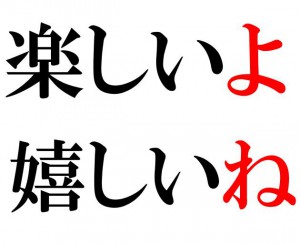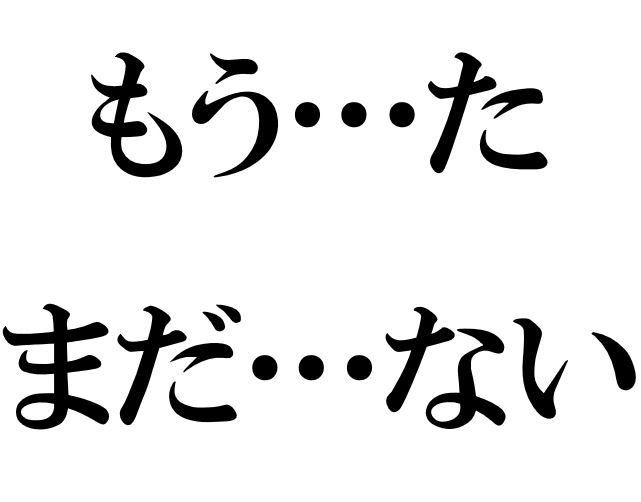Before starting the exercise for perfect tense 「もう…た」「まだ…ない」, please clarify any doubts you may have about the grammatical rules by referring to your grammar guidebook or dictionary. The Instantaneous Composition Method requires you to compose sentences with the target sentence pattern(s) over and over in order to use them almost effortlessly. You should already have the necessary knowledge.
- Reference
- Genki I – Lesson 9: まだ~ていません
- Imabi – Adverbs I and Adverbs III
Instantaneous Composition Exercise for Perfect Tense 「もう…た」「まだ…ない」
This is not a translation exercise. This is the Instantaneous Composition Exercise. As if a reflexive action, try to create an equivalent Japanese sentence shortly after reading an English script. Try not to think for more than three seconds.
- Audio File
English and Hidden Japanese Scripts
| 1. | As for lunch, have (you) eaten (it) already? |
| 昼ごはんはもう食べましたか? |
| 2. | As for the homework, have (you) done (it) already? |
| 宿題はもうしましたか? |
| 3. | Has Kuroda-san come already? |
| 黒田さんはもう来ましたか? |
| 4. | (I) have already left (my) house. |
| もう家を出ました。 |
[adsense]
| 5. | As for the letter, (I) have written (it) already. |
| 手紙はもう書きました。 |
| 6. | As for breakfast, (I) haven’t eaten (it) yet. |
| 朝ごはんはまだ食べていません。 |
| 7. | As for the book, (I) haven’t read (it) yet. |
| その本はまだ読んでいません。 |
| 8. | Sato-san has not come yet. |
| 佐藤さんはまだ来ていません。 |
| 9. | I haven’t bought an umbrella yet. |
| 傘をまだ買っていません。 |
| 10. | The class has not finished yet. |
| 授業はまだ終わっていません。 |
Recommended Links
How to Proceed with the Instantaneous Composition Method

Japanese Grammar Exercise: Sentence-ending Particles 「ね」「よ」「よね」

Japanese Grammar: Expressing Permission 「…てもいい (May)」



